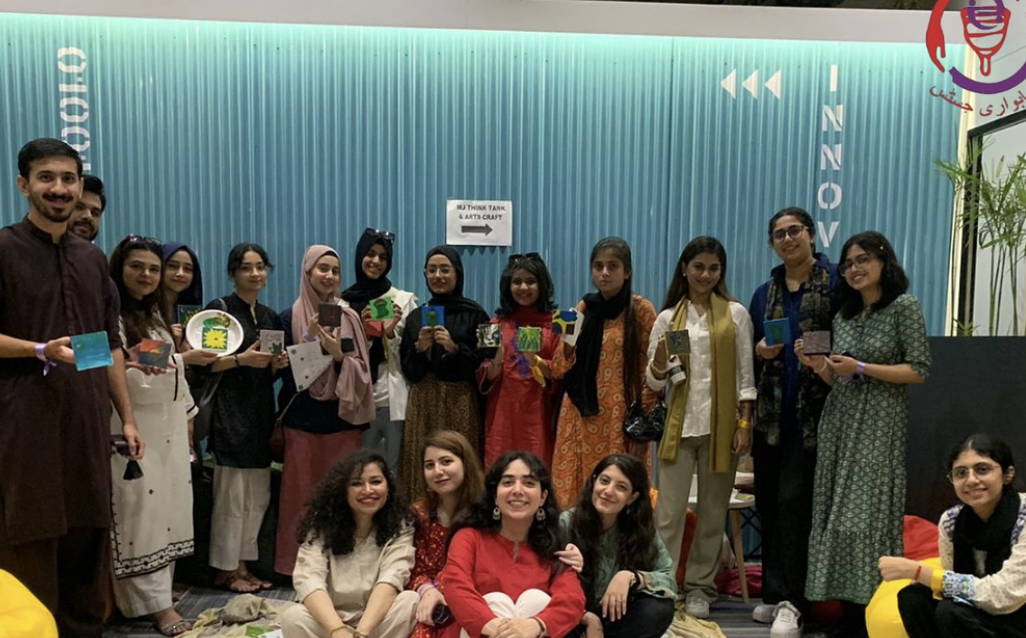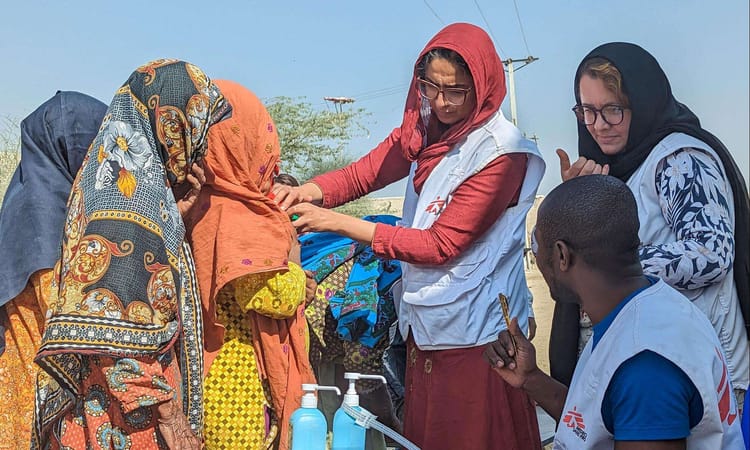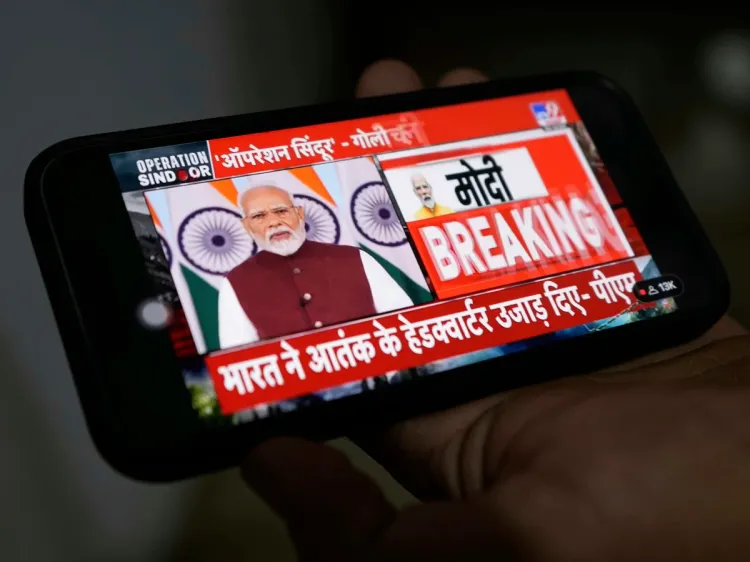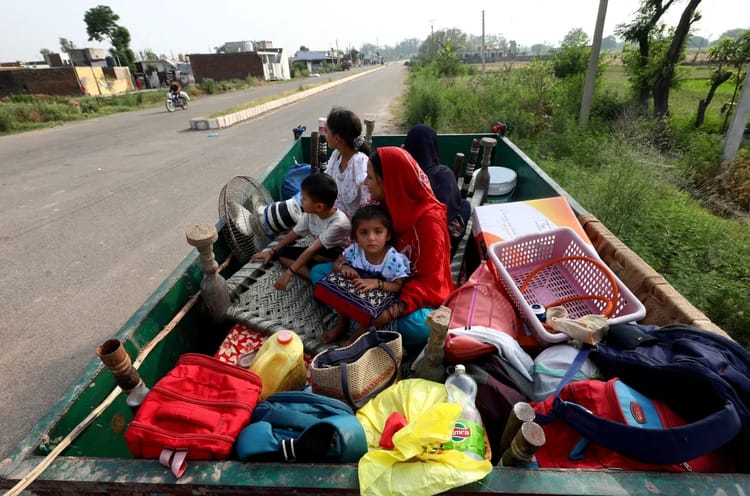Empowering Women Through Digital Activism Amidst Disaster

When the 2022 floods devastated Pakistan’s rural heartlands, entire communities were left stranded without critical support. These areas have long suffered from inadequate infrastructure, healthcare, and basic necessities—gaps that only widened after the super floods. But even in the destruction, some found a way to stay connected. A few locals with limited internet access became frontline reporters, sharing images and videos that exposed the destruction. Their accounts broke through the urban bubble forcing those in cities to confront the scale of loss and displacement.
As social media became a lifeline for flood victims to share their realities, it also became a tool for mobilising aid. Amid the chaos and mounting frustration, Bushra Mahnoor and Anum Khalid recognised a need that often goes unspoken. While relief efforts focused on food, clothing, and shelter, they realised that women in flood-affected regions were likely struggling with managing their periods.
Mahnoor recalled her interactions with women affected by the 2005 earthquake, some of whom told her they had received just one sanitary pad along with their ration supplies and were expected to make it last an entire cycle. “This highlights how deeply misunderstood and neglected women's needs are,” she said. Sitting in their dorm rooms, Mahnoor and Khalid were determined to take action where others had failed to do so.
“We did not set out to start an organisation. Our goal was simple: to gather funds and provide period supplies to those in flood-affected areas who needed them,” said Bushra Mahnoor, co-founder of Mahwari Justice. “Period needs are often overlooked; no one thinks about them. The entire aid distribution system is deeply masculine and misogynistic.”

The role of technology in disaster response
In Pakistan, conservative social norms often limit women’s ability to form organic connections. However, the rise of digital media platforms is helping them overcome these barriers and build networks in new ways. From fundraising to reaching people in remote areas, digital tools made Mahwari Justice’s work possible.
“As a team of two, we couldn’t manage everything manually, so we relied heavily on digital platforms. Handling physical donations would have been challenging, and we needed to remain accountable by sharing receipts of how and where the funds were used. That’s why we set up a GoFundMe along with EasyPaisa and JazzCash accounts,” Mahnoor explained.
With mobile phones and internet access becoming more widespread, reaching affected communities became more feasible. “When certain areas were too remote or inaccessible due to flooding, we’d post on social media, mainly X (formerly Twitter), and someone from within or around that area would respond, helping us connect with locals.”
Similarly, Maryam Jamali, co-founder of Madat Balochistan, found that digital media was pivotal in amplifying the voices of flood-affected communities. When the floods hit, Jamali turned to her X account to express frustration and share firsthand accounts of devastation in her village. These personal narratives resonated with many spurring donations.

“We created an entire network through social media,” Jamali explained. “People who saw my tweets reached out, offered support, and I even connected with volunteers on the ground. This allowed us to coordinate aid efforts efficiently and fill gaps where the government was absent.”
Jamali and her mother built an extensive web of contacts across Balochistan and Pakistan. From managing spreadsheets to arranging access for aid trucks, their digital network ensured that relief reached even the most isolated areas. When Quetta’s routes were closed off, making it impossible to access Karachi or Bolan, social media became the only tool for mobilising help via other routes.
Beyond immediate relief, digital tools also helped in crisis preparedness. Jamali had previously created a website listing vendors in Balochistan who supplied essential goods, which became invaluable during the floods.
A female-centred approach
In past natural disasters and climate-related events, men took the lead in relief efforts, sidelining women’s needs despite their role in caregiving and community rebuilding. This trend persisted in 2022, but digital platforms enabled women-led initiatives to carve out space in disaster relief. Mahnoor and Jamali both emphasised the need for inclusive, gender-conscious aid distribution that prioritised women’s needs.

While Mahwari Justice focused on providing sanitary products to menstruating individuals in flood-affected areas, Madat Balochistan offered critical support to pregnant women and new mothers.
“Our volunteer Irfan went all across the canal bank, asking every single pregnant woman which trimester she was in, how she was doing, how many family members she had, and what she needed.” Based on that, Jamali’s team compiled comprehensive data on specific needs, which she then shared online.
“The data gave people something tangible to respond to. Mama Baby Fund reached out to us, and we received a lot of birthing kits from them.” However, larger organisations like UNFP and WHO dismissed their findings due to a lack of formal data. This highlights the gap between grassroots efforts and institutional responses.
Navigating digital advocacy and online backlash
As digital tools become more ingrained in our daily lives and intersect with critical issues like climate emergencies, they also expose individuals to a darker reality: online hate, trolling, and relentless criticism. No one is truly safe from it.
“Initially, when we were in the news cycle, we faced all sorts of backlash,” recalls Mahnoor. “People would say things like, ‘Oh, they’re obsessed with periods’ or ‘They shouldn’t talk about such a taboo topic.” While others nitpicked relief efforts, questioning everything from why Mahwari Justice was distributing plastic-based pads. “People are unforgiving on the internet. We were told, ‘This isn’t how social work should be done’ or ‘You’re making people dependent on aid,’” Mahnoor shares.
Jamali faced similar challenges. Some questioned the legitimacy of her efforts, while others doubted that a young woman could lead large-scale relief operations. “When you’re 19 and trying to mobilise help, people don’t always take you seriously,” she said. “Traditional channels wouldn’t have given me credibility, but digital trust helped me prove myself.”
Both Mahnoor and Jamali stressed the importance of mental resilience in digital advocacy. “No matter how thick-skinned you are, some of it will get to you. What helps is stepping back, tuning out the noise, and focusing on the impact,” Mahnoor said.

Demanding policy change through digital activism
Since the 2022 floods, Mahwari Justice and Madat Balochistan have evolved beyond immediate relief efforts, expanding their initiatives to tackle systemic issues. Mahwari Justice is pushing for menstrual health policies, including an online petition advocating for the removal of the luxury tax on sanitary pads making them more accessible to those in need. Meanwhile, Madat Balochistan continues to advocate for long-term infrastructure development in climate-vulnerable areas of Balochistan.
Jamali’s experience during the floods reinforced the importance of data collection in shaping policy. Beyond advocacy, her team is focusing on tech-driven solutions to create alternative livelihoods and expand access to education. “Many women assigned to rural schools refuse postings because climate conditions make living there unbearable. If you have the privilege, you leave. But those who stay—often the most vulnerable—have no access to education or stable incomes,” she says. To address this, Jamali along with her friend Irfan recently launched Salahuddin Academy a community school that aims to provide education to over 100 students from schools where teachers don’t show up. With an internet connection and a projector, they plan to link Baloch students to teachers across Pakistan.
Beyond education, digital tools are offering women alternative career paths as agriculture becomes increasingly unviable due to climate change. “Women in these areas are often forced into low-paying domestic work, earning as little as 2,000 rupees a month. Skills in digital tools and tech-based livelihoods could offer them a way out,” says Jamali.
Technology is also critical in disaster preparedness. Digital solutions, such as early warning systems, weather stations, and climate-resilient infrastructure, can help communities anticipate extreme weather events and protect their livelihoods. “If we can access real-time data on when it's going to rain or when water levels are rising, farmers can take action to protect their crops, and communities can prepare for evacuations,” Jamali explains.
By combining grassroots activism with digital campaigning and tech-driven solutions, these organisations prove that social media isn’t just a tool for awareness; it’s a force for systemic change.
Ayesha Mirza is a journalist focusing on social justice, climate change, minority rights, and gender issues.






Member discussion